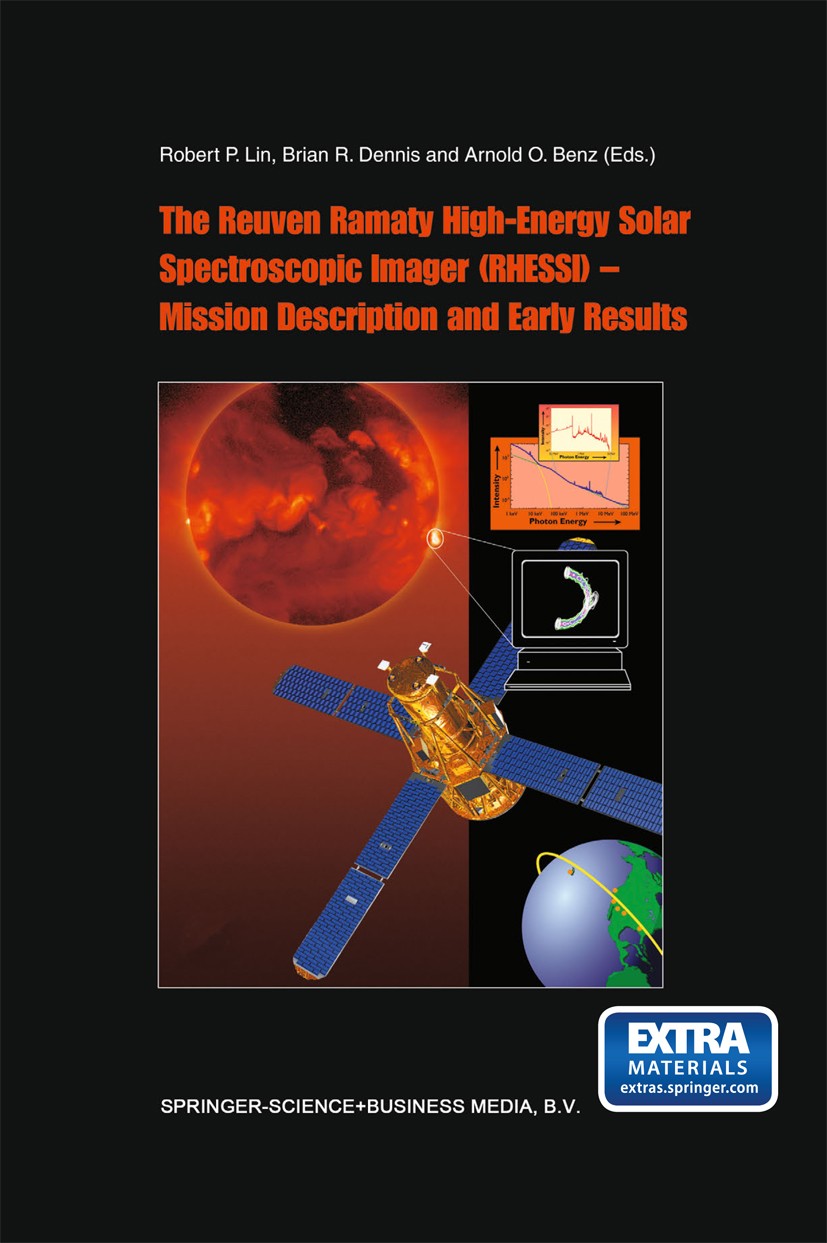| 书目名称 | The Reuven Ramaty High Energy Solar Spectroscopic Imager (RHESSI) - Mission Description and Early Re | | 编辑 | Robert P. Lin,Brian R. Dennis,Arnold O. Benz | | 视频video | http://file.papertrans.cn/919/918587/918587.mp4 | | 图书封面 |  | | 描述 | The Reuven Ramaty High Energy Solar Spectroscopic Imager (RHESSI) satellite was launched on 5 February 2002. Its objective is to study the energy release and particle acceleration in solar flares through observations of X-rays and gamma rays. Two novel technologies are combined to obtain both spectra and images over a broad energy range. For the spectroscopy, cooled hyperpure germanium detectors are used to cover the energy range from 3 keV to 17 MeV with unprecedented keV-class resolution. Since focusing optics are not possible for making images with such high energy photons, tungsten and molybdenum absorbing grids are used to modulate the X-rays and gamma-rays coming from the Sun as the spacecraft rotates. This allows the spatial Fourier components of the source to be determined so that images can be made in spectral ranges where astronomical images have never been produced before. These new instrumental techniques require equally innovative software to reconstruct X-ray and gamma-ray spectra and images from the observations. .Ample solar activity, abundant observations, and an open data policy have attracted many researchers. Astronomers face in the RHESSI mission an exciting ne | | 出版日期 | Book 2003 | | 关键词 | Solar flare; instruments; observatory; solar; solar activity; spectroscopy; sun | | 版次 | 1 | | doi | https://doi.org/10.1007/978-94-017-3452-3 | | isbn_softcover | 978-90-481-6212-3 | | isbn_ebook | 978-94-017-3452-3 | | copyright | Springer Science+Business Media B.V. 2003 |
The information of publication is updating

|
|
 |Archiver|手机版|小黑屋|
派博传思国际
( 京公网安备110108008328)
GMT+8, 2025-11-17 22:47
|Archiver|手机版|小黑屋|
派博传思国际
( 京公网安备110108008328)
GMT+8, 2025-11-17 22:47


